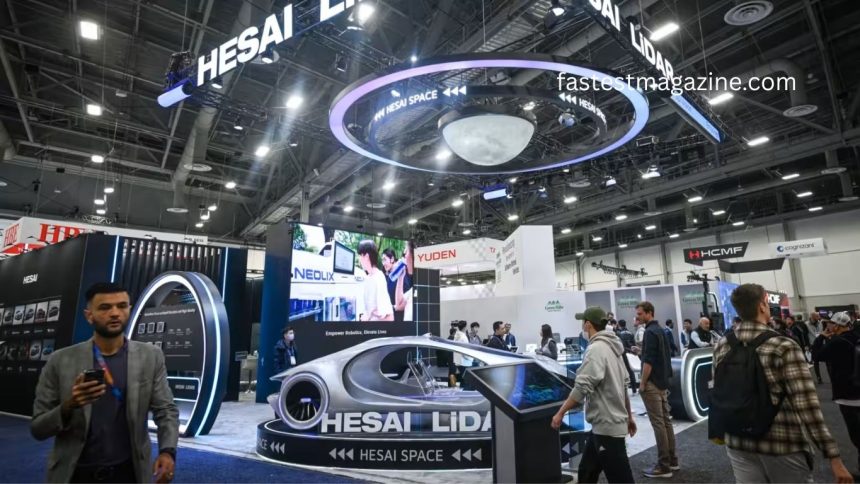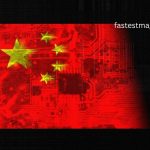HONG KONG — Hesai Group, China’s premier manufacturer of automotive LiDAR sensors, made a commanding entrance on the Hong Kong stock exchange Tuesday. The move is seen as a strategic safeguard intended to reassure investors concerned about the uncertainty surrounding its Nasdaq-listed shares.
Strategic Dual Listing: A Hedge Against U.S. Regulatory Pressure
By adopting a dual listing in Hong Kong, Hesai strengthens its resilience against potential regulatory actions in the U.S. The company’s executive leadership has framed the offering as a bridge to Asian capital markets—less exposed to the volatility and scrutiny facing foreign-listed Chinese firms in America.
Its Hong Kong listing represents more than a symbolic gesture. Hesai reportedly raised HK$4.16 billion (≈ US$535 million) through the share offering, marking it the largest capital raise ever recorded by a LiDAR company and the largest Hong Kong return of capital from a U.S.–listed Chinese firm in nearly four years.
Having access to both U.S. and Hong Kong markets gives Hesai greater flexibility. If political tensions or regulatory crackdowns intensify in the U.S., its Hong Kong stock can provide an alternate liquidity route for investors. That dual structure also helps the company maintain global visibility while catering to regional investors who view Hong Kong listings as more stable or geopolitically neutral.
Market Response & Investor Sentiment
On its first day of trading, Hesai’s shares surged roughly 10 %, reaching HK$234—a slight premium over its Nasdaq closing price of US$29.80 the previous day.
This enthusiastic response underlines strong investor appetite and confidence in Hesai’s strategy.
Market watchers interpret the rally as a vote of confidence not just in Hesai’s fundamentals, but in its ability to navigate turbulence in U.S.–China financial relations. For many portfolio managers, dual-listing can be seen as an insurance policy. If pressure mounts on Chinese ADRs (American Depositary Receipts), the Hong Kong listing gives shareholders alternative exposure.
Still, the dual listing is not without challenges. Market observers caution that maintaining investor confidence across two jurisdictions demands rigorous compliance, consistent performance, and clear communication—any misstep could amplify risk rather than mitigate it.
Fueling Growth: Where the Capital Will Be Deployed
Hesai plans to channel the bulk of its listing proceeds into scaling manufacturing capacity, expanding global footprint, and enhancing product development to stay ahead in a rapidly evolving LiDAR market.
The company aims to quadruple throughput, fund new plants in China and overseas, and broaden its product suite with next-generation sensors.
Already, Hesai is making aggressive moves to expand its production lines. In 2024, it shipped over 500,000 LiDAR units and has announced plans for a new overseas facility to begin operations by 2026.
Its leadership claims these steps are vital to meet surging demand from automakers and robotics firms alike.
By reinforcing its manufacturing backbone and diversifying its geographic presence, Hesai seeks to reduce risks from supply chain bottlenecks, tariffs, and geopolitical friction—critical considerations in the high-stakes LiDAR sector.
Competitive Edge & Industry Positioning
Hesai is not just playing defense. It already commands a formidable position in the global LiDAR market. In 2024, the company held approximately 37 % global share by revenue, shipped over half a million units, and secured design wins across 70 vehicle models.
It has locked in contracts with top-tier auto brands; most recently, it signed an “exclusive multi-year” LiDAR supply deal with Mercedes-Benz.
South China Morning Post
It also recently earned ISO 26262 functional safety certification for its ATX sensor, reinforcing customer confidence in reliability and safety compliance.
Yet, competition is intense. U.S. rivals such as Luminar and Innoviz face regulatory headwinds; Chinese peers like RoboSense are pressing hard in domestic and international markets.
The ability to invest rapidly in R&D, scale production, and cultivate strong OEM relationships will likely determine who prevails in this emerging domain.
Regulatory Overhang & Risk Mitigation
One of the main catalysts behind Hesai’s Hong Kong listing is growing concern over U.S. regulatory scrutiny of Chinese firms. In recent years, some Chinese ADRs have faced delisting threats, audit disputes, and nationalist policy pressures.
Hesai executives have stressed they have found no legal basis to expect delisting and affirmed they have not received any U.S. inquiries or delisting threats.
Still, Hesai contended with additional pressure earlier this year after being added to a U.S. Department of Defense list of companies with alleged ties to China’s military. Hesai vehemently denied the accusations, asserting no connection to military entities, and launched a legal challenge.
Read More: https://fastestmagazine.com/china-ignites-bold-conversations-on-ai/
Frequently Asked Questions:
What is Hesai Group?
Hesai Group is China’s leading manufacturer of LiDAR (Light Detection and Ranging) sensors, which are critical components for autonomous vehicles, robotics, and advanced driver-assistance systems (ADAS).
Why did Hesai decide to list its shares in Hong Kong?
Hesai’s Hong Kong listing is a strategic move to safeguard against potential risks of delisting from the Nasdaq due to rising U.S.–China regulatory tensions. It provides the company with diversified access to global capital markets and strengthens investor confidence.
How did Hesai’s shares perform on their first day of trading in Hong Kong?
Hesai’s shares surged around 10% on their debut, reflecting strong investor confidence and optimism toward the company’s growth strategy and market potential.
What does a dual listing mean for Hesai?
A dual listing allows Hesai to have its shares traded on both the Nasdaq and Hong Kong Stock Exchange. This gives investors in different regions access to the company’s stock and helps mitigate geopolitical or regulatory risks from any single market.
How will Hesai use the funds raised from the Hong Kong listing?
The funds will primarily be used to expand production capacity, invest in research and development (R&D), and build new manufacturing facilities in China and abroad to meet growing global demand for LiDAR technology.
What risks is Hesai facing in the U.S. market?
Hesai and several other Chinese companies have faced scrutiny under U.S. regulations concerning data security, auditing transparency, and potential ties to the Chinese military. While Hesai denies any military links, concerns over delisting or additional sanctions remain.
How does Hesai’s Hong Kong listing benefit investors?
The Hong Kong listing offers investors alternative trading access in case of U.S. market restrictions. It also provides more stability for Asian investors who prefer to trade in a closer and potentially less politically influenced market.
Conclusion
Hesai’s strategic debut on the Hong Kong Stock Exchange marks a pivotal moment for both the company and China’s broader technology sector. By securing a dual listing, Hesai has effectively strengthened its financial foundation and reduced dependency on the volatile U.S. market. The move not only mitigates the risk of potential Nasdaq delisting but also demonstrates confidence in Hong Kong’s role as a global financial hub for innovative Chinese enterprises.














